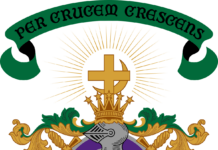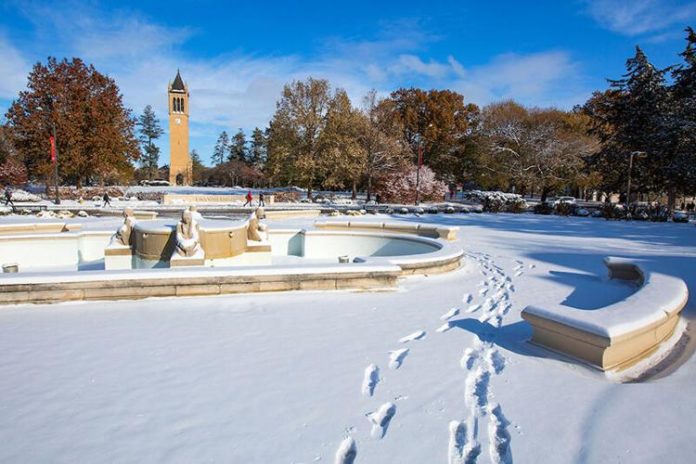A long-standing passion project, the National Pan-Hellenic Council (NPHC) aims to represent Black greek-letter presence and Black history at Iowa State through the creation of a plot.
After nearly a decade of planning, Iowa State and the NPHC plan on striking ground this year on a plot made to represent the nearly 100-years of history of Black fraternities and sororities on campus.
“This is something that is going to really shift the culture and provide another place for Black and brown people to be able to see themselves and their history there,” said Julian Neely, former Student Government president and current graduate student in journalism at Iowa State.
Planned as far back as 2013, the plot gained acceptance in late 2017. This was possibly due to 2017’s Campus Climate Survey, Neely said, but still gives a large portion of the credit to the hard work of predecessors and the will of the students.
“We’re not going to take no for an answer. We’re not going to say that this is going to take seven to nine [more] years,” Neely said. “We’re going to communicate [that] no, we need this to happen within the next two years and us having that perseverance and that determination to start seeking answers and assistance from other parties to be able to engage in it.”
Neely made it his mission to show the seriousness of the project by taking initiative through working with two architecture students to come up with ideal designs, working with various departments to find acceptable land for the plot and researching Black greek plots at other universities.
“It has to be professionally designed,” said Billy Boulden, graduate student in education and director of sorority and fraternity engagement. “It’s common for the groups to paint a bench with their organization colors and that becomes part of the plot, and so we were gonna do that here just because of the fluidity of our organizations. But you know, we didn’t want one group [to] entrepreneur painting another group’s bench.”
While the design is not currently available for the public to see, reports from multiple members of the committee in charge of the project say they wanted to create something away from the more ephemeral plot designs other universities have created.
Using pillars or columns as opposed to simply painting existing structures such as a bench or trees, the NPHC wants to represent all of the Divine Nine fraternities and sororities with both ongoing and inactive fraternities and sororities at Iowa State. The plot itself will serve as a public outdoor congregational space for student organizations.
As far as the creation of the design, engineering consulting company Bolton & Menk, who designed other installations at Iowa State, has appeared to have taken over planning for the design from the two original architecture students. It is currently unknown if the planned design is altered or completely new from the designs from Ariana Irizarry, a senior in the architecture-professional program, and Aaron Lewis, who graduated in 2020.
While full details as to the exact location are unknown, the plot itself is slated to be built in the northwest corner of the Memorial Union. The size and cost of the project are unavailable at the time as bidding for the project does not open until April.
However, the anticipated cost is over $100,000, according to its current listing, and is anticipated to cost somewhere between $200,000-$300,000, according to Boulden.
As far as funding, the project is mostly donation-based and has received an unknown amount from Student Government. Donations can be made through the Iowa State University Foundation.
A deeper dive into Iowa State’s history with Black greek life shows off prominent Black figures in history.
Iowa State has been home to a few select Black greek organizations that have nearly a 100-year standing. Despite its near centurion status, it has only now been given a fixture to recognize its prominence.
“The project has more of a historic connotation to it,” said Johnathan Hall, president of Iowa State’s branch of the NPHC. “It’s more common as you go through the South and more southern colleges and universities and [historically Black colleges and universities (HBCUs).] It’s just a mark of land that signifies that Black sororities and fraternities are present on the campus and they contribute to the history in the student experience.”
Stemming from the adage “forty acres and a mule,” the project draws its roots from post-slavery, Reconstruction-era restructuring of the South. The 1866 Southern Homestead Act allocated land to former slaves from slave owners.
These plots of land were mostly empty and used for agriculture. However, the act was overturned by President Andrew Johnson, a notable white supremacist. The reversal of the act ushered in disenfranchisement soon after attaining freedom.
As a nod to the historical importance of land and the historical denying of land, the NPHC pushed to create plots of land signifying Black presence at universities. As Hall mentioned, plots are commonplace among HBCUs and southern universities. Designs often differ but aim to have the same objective.
The University of Iowa had officiated its NPHC plot in 2016, becoming the first of the Big 10 schools to have an NPHC plot.
“Greek organizations hold up a significant amount of history within Black history; we have a lot of folks that have a lot of icons that were part of these organizations,” Neely said. “So you think about Dr. George Washington Carver, he’s a proud member of Phi Beta Sigma fraternity, Inc. You have Dr. Martin Luther King, who is a proud member of Alpha Phi Alpha fraternity, Inc.”
While not all prominent figures in greek organizations associated with Iowa State studied at Iowa State, intercollegiate and alumni efforts bolster the history of these groups.
One of the most notable figures in Iowa State’s history is Jack Trice, who was a member of Alpha Phi Alpha. Charles Preston Howard, cofounder of the Bar Association, was also a member of Alpha Phi Alpha at Drake University in Des Moines.
With enrollment numbers down even at Iowa State, the school has specifically seen a declining trend in Black enrollment numbers since 2016.
With a minor bounce back in the racial population gaps on campus and a plot celebrating the Black history and contributions to Iowa State’s history, Iowa State is seemingly on the right track to promote racial equity.





















